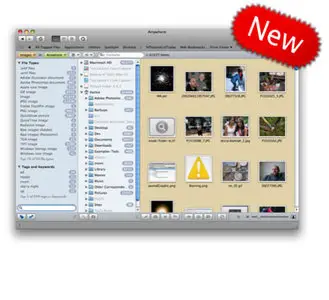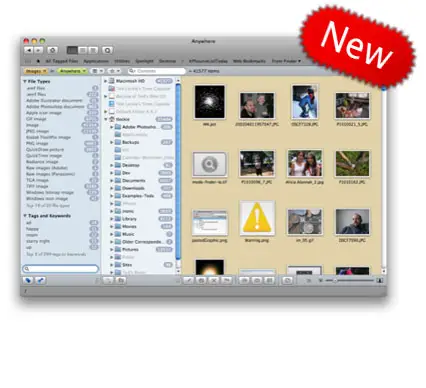Ironic Leap 2.0.2 MacOSX | 7.08 mb
With Leap you find things based on your natural memory of that file. "Hhmm it was a big photoshop file of a basketball court" or "Something I tagged important" or "A word document somewhere in my documents folder" (feel free to substitute your own here).With the Finder though, it's more like "I think it might be called bball.psd and that I put it in the originals folder in images in the Project 29 folder which I think I put in Documents… nope, not there… where did I put it?"Finally a way to quickly tag documents. Instantly call up tagged documents using Leap's tag cloud.Peruse found documents visually by thumbnail or using a more traditional list. Choose how large or small to show the documents.Add tags, email them, open documents in your favourite program, throw them out - they're at your command.
Features of "Leap":
· Flat is the new black.
Folders and rigid hierarchies might have made sense back when we had hundreds of files, but we're now swimming in images, files, movies and other data. That's where tags come in. Tags are keywords that you assign to a file.This makes it extremely easy to find documents, regardless of their location. Why hunt through an arcane hierarchy of folders and files to find the document we want? Apple's Finder first came out over 20 years ago and we think it's time for a new approach to finding, organizing and browsing your most important documents.In addition to the tags you enter, Leap will find keywords associated with a file from XMP metadata, from Spotlight metadata, from its folder location and from its creation date.
Leap is the perfect tool for adding tags to your files. Tag files from within Leap or by dragging a file into Leap's drop zone at the side of your screen. You can elect to have Leap keep your tags in Spotlight comments or in its own very fast, exportable, database.If you've already tagged some of your files using QuickSilver, Punakea, TagBot and others or yourself using Spotlight comments, Leap can usually find those tags too.
· A more natural way.
With Leap you find things based on your natural memory of that file. "Hhmm it was a big photoshop file of a basketball court" or "Something I tagged important" or "A word document somewhere in my documents folder" (feel free to substitute your own here).With the Finder though, it's more like "I think it might be called bball.psd and that I put it in the originals folder in images in the Project 29 folder which I think I put in Documents… nope, not there… where did I put it?"
· Serendipity.
Wikipedia defines serendipity as the effect by which one accidentally discovers something fortunate, especially while looking for something else entirely.Leap's ability to quickly browse like documents allow you to stumble upon not only the file you were looking for but sometimes an even better one that you weren't looking for. Leap's search results show up as beautiful, scalable thumbnails that can be ordered anyway you want.Use Leap's loupe tool to inspect the document in perfect detail. On Leopard you can also browse through your documents using the new Quicklook feature.
What's New:
· Leap 2 incorporates a new open source tagging system called Open Meta.
· When Leap 2 is first run it will non destructively copy all tags from Leap 1 to the new system.
· Leap 2 is more scalable and robust than version 1, and is faster, etc.
· Please also see the release notes for all the betas for other fixes.
Ironic.Leap.v2.0.2.MacOSX.Incl.Keymaker-CORE
No Any Mirror Need !!!



